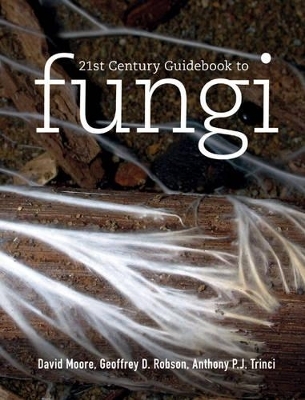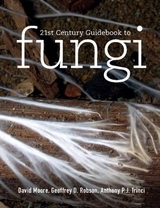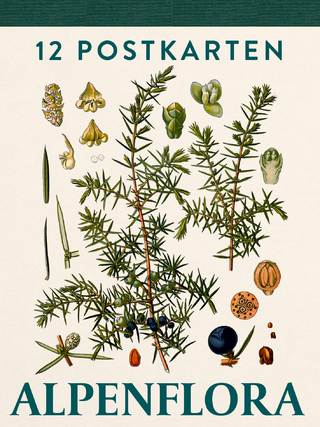
21st Century Guidebook to Fungi with CD
Cambridge University Press
978-1-107-00676-8 (ISBN)
- Titel erscheint in neuer Auflage
- Artikel merken
Fungi have their own unique cell biology and life cycle, but also play critical roles in wider biological systems. This textbook provides a comprehensive view of fungal biology, ranging in scope from the evolutionary origins of fungi and other eukaryotes more than a billion years ago, to the impact fungi have on everyday life. Bringing mycology teaching right up to date, this unique systems biology approach emphasises the interactions between fungi and other organisms to illustrate the critical roles that fungi play in every ecosystem and food web. With more than 60 colour figures, examples of computational modelling and resource boxes directing students to areas of interest online, this book gives students an appreciation of fungi both at the organism level and in the context of wider biology. A companion CD accompanying the print book features a hyperlinked version of the book and the fully integrated World of Cyberfungi website.
David Moore is a retired Reader in Genetics and Honorary Reader in the Faculty of Life Sciences at the University of Manchester. He is a past President of the British Mycological Society and was Executive Editor of the international scientific journal Mycological Research for ten years. In recent years he has created the educational website www.fungi4schools.org which provides resources for UK schools, sponsored by the British Mycological Society. Geoffrey D. Robson is Senior Lecturer in the Faculty of Life Sciences at the University of Manchester, UK. He teaches the undergraduate courses 'Microbes, Man and the Environment', 'Fungal Ecology and Biotechnology' and 'Microbial Biotechnology' and is Programme Director for the Enterprise Biotechnology Course. He is currently General Secretary of the British Mycological Society. Anthony P. J. Trinci was Barker Professor of Cryptogamic Botany and Dean of the School of Biological Sciences, and is now Emeritus Professor at the University of Manchester. His teaching at Manchester included undergraduate courses in microbiology, mycology and biotechnology, and postgraduate level units in microbial biotechnology. He is a past President of both the Society for General Microbiology and the British Mycological Society.
Preface; Part I. Nature and Origins of Fungi: 1. 21st-century fungal communities; 2. Evolutionary origins; 3. Natural classification of fungi; Part II. Fungal Cell Biology: 4. Hyphal cell biology and growth on solid substrates; 5. Fungal cell biology; 6. Structure and synthesis of fungal cell walls; Part III. Fungal Genetics and Diversity: 7. From the haploid to the functional diploid: homokaryons, heterokaryons, dikaryons and compatibility; 8. Sexual reproduction: the basis of diversity and taxonomy; 9. Continuing the diversity theme: cell and tissue differentiation; Part IV. Biochemistry and Developmental Biology of Fungi: 10. Fungi in ecosystems; 11. Exploiting fungi for food; 12. Development and morphogenesis; Part V. Fungi as Saprotrophs, Symbionts and Pathogens: 13. Ecosystem mycology: saprotrophs, and mutualisms between plants and fungi; 14. Fungi as pathogens of plants; 15. Fungi as symbionts and predators of animals; 16. Fungi as pathogens of animals, including man; Part VI. Fungal Biotechnology and Bioinformatics: 17. Whole organism biotechnology; 18. Molecular biotechnology; Part VII. Appendices: Appendix 1. Outline classification of fungi; Appendix 2. Mycelial and hyphal; Index.
| Erscheint lt. Verlag | 14.7.2011 |
|---|---|
| Zusatzinfo | 57 Tables, black and white; 69 Plates, unspecified; 87 Halftones, unspecified; 250 Line drawings, unspecified |
| Verlagsort | Cambridge |
| Sprache | englisch |
| Maße | 226 x 283 mm |
| Gewicht | 2130 g |
| Themenwelt | Naturwissenschaften ► Biologie ► Botanik |
| Naturwissenschaften ► Biologie ► Mykologie | |
| ISBN-10 | 1-107-00676-7 / 1107006767 |
| ISBN-13 | 978-1-107-00676-8 / 9781107006768 |
| Zustand | Neuware |
| Haben Sie eine Frage zum Produkt? |
aus dem Bereich

